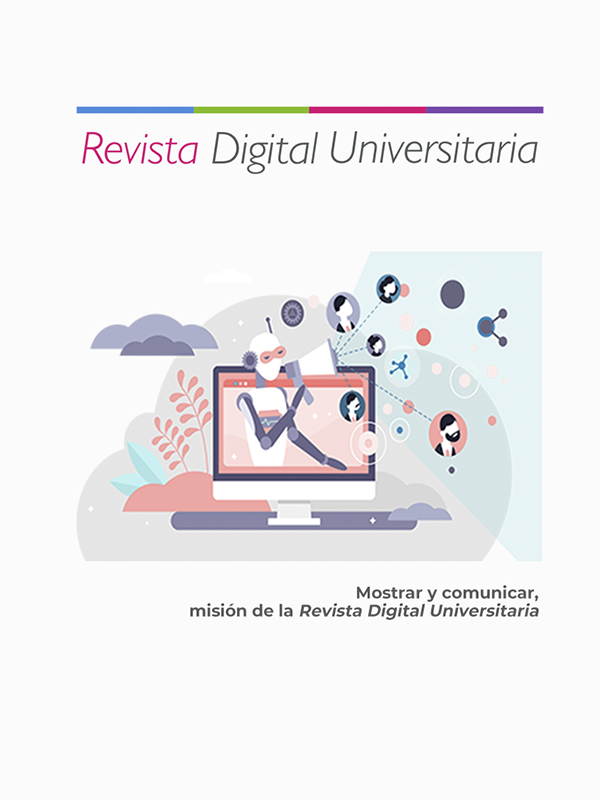Applied Physics: support for fighting the covid-19 pandemic
DOI:
https://doi.org/10.22201/cuaieed.16076079e.2021.22.2.6Keywords:
applied physics, biophysics, virus, SARS-CoV-2, COVID-19Abstract
Physics is based on two fundamental pillars for its exercise, theory, and experimentation, both are complementary. New phenomena are discovered in physical experimentation; in it, the results that theory indicates or predicts are also verified.
Currently, the whole world is experiencing a health emergency due to the appearance of sars-CoV-2 virus, which causes covid-19 disease. Therefore, we seek to understand his origin, composition or structure, ways of contagion and spread, as well as having control of its mechanism and find a possible cure.
Applied physics, with its results, experimental tests, application of methods and concepts, is supporting the understanding of this virus and the fight against it.
References
Ala Bouhanguel, P. D. (2011). Flow visualization in supersonic ejectors using laser tomography techniques. International Journal of Refrigeration, 34(7), 1633‐1640.
cbs 8 San Diego. (2020, 1 de julio). How respiratory droplets can spread ‐ or be stopped . YouTube. https://www.youtube.com/watch?v=sIpHCptKZUg.
cdc, Eckert, A. y Higgins D. (2020). sars-CoV-2 (cdc-23312).png [morfología ultraestructural del nuevo coronavirus 2019]. https://commons.wikimedia.org/wiki/File:SARS-CoV-2_(CDC-23312).png.
cnbc. (2020, 10 de mayo). How Ultraviolet Light Could Help Stop The Spread Of Coronavirus . YouTube. https://www.youtube.com/watch?v=OJ08BuyejuE.
cnn Chile. (2020, 1 de julio). Investigación muestra cómo el coronavirus sars-CoV-2 puede propagarse al hablar . YouTube. https://youtu.be/4JJu5Sesia8.
Contoyiannis, Y., Stavrinides, S. G., Hanias, M. P., Kampitakis, M., Papadopoulos, P., Picos, R. y Potirakis, S. M. (2020). A universal physics-based model describing covid-19 dynamics in Europe. International Journal of Environmental Research and Public Health, 17(18). doi: https://doi.org/10.3390/ijerph17186525.
Settles, G., Hackett, E., Miller, J. y Weinstein, L. (1995, septiembre). Full-Scale Schlieren Flow Visualization. En J. P. Crowder (Ed.), Proc. Intl. Symposium on Flow Visualization, September 11-14, 1995, Seattle, Washington: Flow Visualization vii (pp. 2-13). Begell House.
Imagen Noticias. (2020, 8 de mayo). ¿Cómo destruye el lavado de manos al Covid-19? | Noticias con Yuriria Sierra . YouTube. https://youtu.be/g2CltabnSwk.
Ingersoll, J. G. (2021). Observations on the Occurrence, Transmission and Management of the covid-19 Pandemic Derived from Physics. Diseases, 9(1), 9. doi: https://doi.org/10.3390/diseases9010009.
Snyder, K., Quddus, R., Hollingsworth, A. D., Kirshenbaum, K. y Grier, D.G. (2021, 17 de marzo). Holographic Immunoassays: Battling covid-19with Soft Matter Physics. En C. Reichhardt (moderadora), Session P17: Statistical Mechanics of Disease Propagation i. American Physical Society March Meeting 2021. https://meetings.aps.org/Meeting/MAR21/Session/P17.
Sreejith, K. R, Ooi, C. H., Jin, J., Dao, D. V. y Nguyen, N. T. (2018, 4 de diciembre). Digital polymerase chain reaction technology – recent advances and future perspectives. Lab Chip, 18(24), 3717-3732. doi: https://doi.org/10.1039/c8lc00990b.
Klanecek, Z., Naganawa, S., Kim, J., Rivetti, L., Studen, A., Yip, S. S. F. y Robert, J. (2021, 16 de marzo). Performance and Robustness of Machine Learning‐based Radiomic covid-19 Severity Prediction. En Session H71: Poster Session i (2:00pm – 4:00pm). American Physical Society March Meeting 2021. http://meetings.aps.org/Meeting/MAR21/Session/H71.116.
Milenio Noticias. (14 de Mayo de 2020). Tortillería aplica la sana distancia de manera ingeniosa. https://www.youtube.com/watch?v=vTwI9lSI05o.
Mittal, R., Ni, R., y Seo, J. (2020, 10 de julio). The flow physics of covid-19. Journal of Fluid Mechanics, 894, F2. doi: https://doi.org/10.1017/jfm.2020.330.
nhk WORLD‐JAPAN. (2020a, 3 de abril). Coronavirus: New Facts about Infection Mechanisms – nhk Documentary . YouTube. https://youtu.be/H2azcn7MqOU.
nhk WORLD‐JAPAN. (2020b, 30 de junio). covid-19: Clearing the Air Effectively – nhk Documentary . YouTube. https://youtu.be/59tQeL0ehbM.
nhk WORLD‐JAPAN. (2020c, 13 de Mayo). covid-19: The Dangers of “High‐Touch Surfaces” – nhk Documentary . YouTube. https://youtu.be/oB9mAgicwAg.
niaid. (2020, 12 de febrero). Novel Coronavirus sars-CoV-2.png [imagen de sars-CoV-2 obtenido con un microscopio de transmisión de electrones]. https://commons.wikimedia.org/wiki/File:Novel_Coronavirus_SARS-CoV-2.jpg.
Ortisa. (2010, 19 de marzo). Scheme TEM.es.png [esquema de un microscopio electrónico de transmisión]. https://commons.wikimedia.org/wiki/File:Scheme_TEM.es.png.
Rober, M. (2020, 18 de marzo). How To See Germs Spread Experiment (Coronavirus) . YouTube. https://youtu.be/I5-dI74zxPg.
rcsbProteinDataBank. (2020, 18 de mayo). Fighting Coronavirus with Soap . YouTube. https://youtu.be/s2EVlqql_f8.
U.S. National Library of Medicine. (2020, 20 de agosto). Temperatura corporal normal. Medline Plus. https://medlineplus.gov/spanish/ency/article/001982.htm#:~:text=Algunos%20e.
Velavan, T. P. y Meyer, C. G. (2020, marzo). The covid-19 epidemic. Tropical Medicine and International Health, 25(3), 278–280. doi: https://doi.org/10.1111/tmi.13383.
Völker, C. (2020, 20 de marzo). Keep your distance: A new video from the Bauhaus-Universität Weimar illustrates how germs can spread through the air. Bauhaus‐Universität Weimar. https://cutt.ly/dk2OtGo.
Vox. (2020, 18 de marzo). How soap kills the coronavirus . YouTube. https://youtu.be/-LKVUarhtvE.
Winey, M., Meehl, J. B., O’Toole, E. T. y Giddings, T. H. Jr. (2014). Conventional transmission electron microscopy. Molecular biology of the cell, 25(3), 319–323. doi: https://doi.org/10.1091/mbc.E12-12-0863.
Youtube pidc. (2020, 30 de junio). Face mask experiment . YouTube. https://www.youtube.com/watch?v=dcvdvZ16nlw.
Published
Issue
Section
License
Copyright (c) 2022 Revista Digital Universitaria

This work is licensed under a Creative Commons Attribution-NonCommercial-ShareAlike 4.0 International License.

Revista Digital Universitaria es editada por la Universidad Nacional Autónoma de México se distribuye bajo una Licencia Creative Commons Atribución-NoComercial 4.0 Internacional. Basada en una obra en http://revista.unam.mx/.










